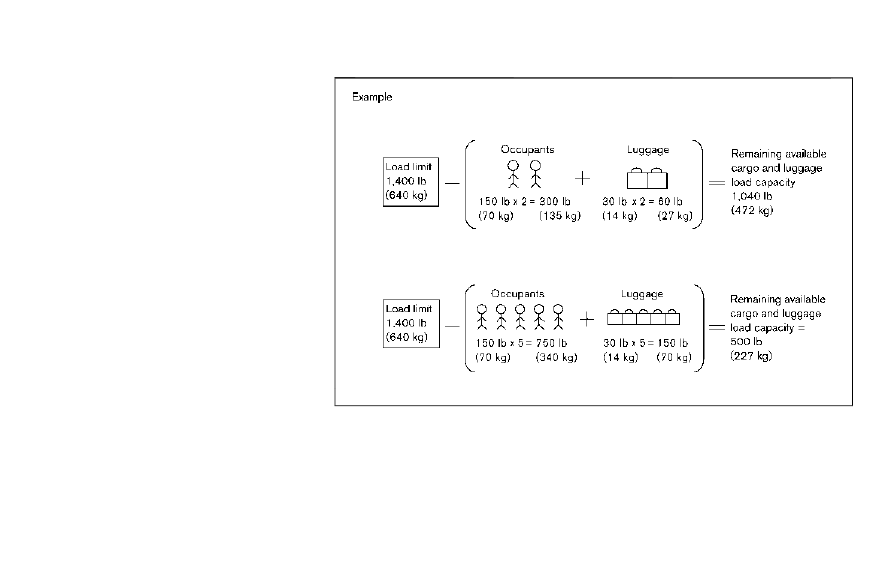Nissan Qashqai (2022 year). Manual in english - page 31

be loaded into the vehicle. If the
vehicle is used to tow a trailer,
the trailer tongue weight must
be included as part of the cargo
load. This information is located
on the Tire and Loading Infor-
mation label.
.
Cargo capacity - permissible
weight of cargo, the subtracted
weight of occupants from the
load limit.
VEHICLE LOAD CAPACITY
Do not exceed the load limit of your
vehicle shown as “The combined
weight of occupants and cargo” on
the Tire and Loading Information
label. Do not exceed the number of
occupants shown as “Seating Ca-
pacity” on the Tire and Loading
Information label.
To get “the combined weight of
occupants and cargo”, add the
weight of all occupants, then add
the total luggage weight. Examples
are shown in the following illustra-
tion.
STI0447
Steps for determining correct load
limit
1.
Locate the statement “The com-
bined weight of occupants and
cargo should never exceed XXX
kg or XXX lbs” on your vehicle’s
placard.
2.
Determine the combined weight
of the driver and passengers
that will be riding in your vehicle.
3.
Subtract the combined weight
of the driver and passengers
from XXX kg or XXX lbs.
Technical and consumer information
10-13